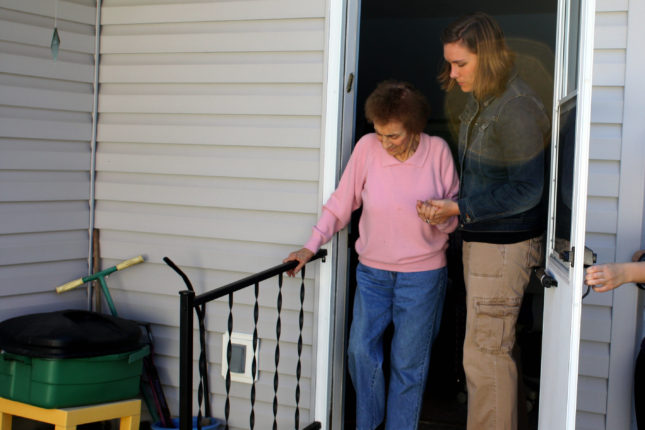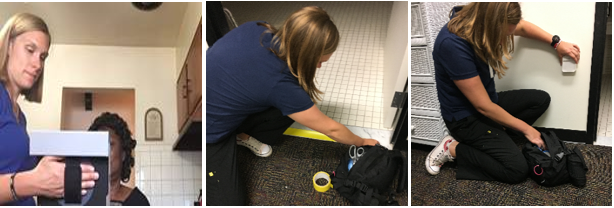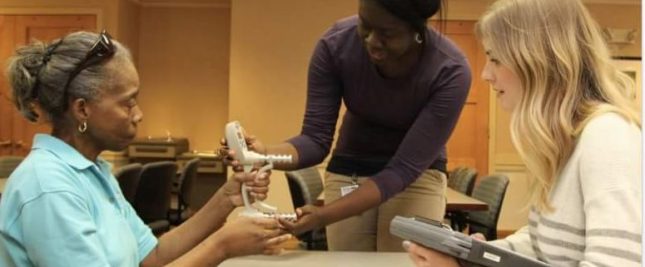Target audience: Community-dwelling older adults who have fallen or are worried about falling
Health outcomes: Reduced rate of falls
Delivered by: Occupational Therapist
Program type and format: 1:1 intervention in the home
Length: 2–3 sessions (up to 2 hours) with a 30-minute booster at 3–6 months
Professional required: Occupational therapist
Settings: Area Agencies on Aging and congregate living facilities
Funding note: Department and Housing and Urban Development, MOHHU0024, MOHHU0040
The Home Hazard Removal Program (HARP) is a fully manualized, evidence-based fall prevention intervention designed to reduce falls for community-dwelling older adults. HARP includes:
- A comprehensive assessment of abilities, awareness of fall risk behaviors (Falls Behavioral Scale) and hazards in the home (Westmead Home Safety Assessment)
- A tailored home modification prescription developed collaboratively
- Assistance in removing the home hazards
- Education on fall risks and strategies to address fall risks
HARP is available from peplab@wustl.edu.
For a list of therapists who are trained to deliver HARP, see our directory.

An in-home assessment of environmental hazards
Older adults receive a total of 1–3 visits over one month with an occupational therapist. The occupational therapist uses a home hazard removal kit of low-cost items to address fall hazards. More complex modifications are addressed in future visits and may include a contractor for installation. In our experience, on average, the modifications cost less than $200. If needed, resources for assistance to obtain home modifications vary across the U.S. and include local lending closets, Rebuilding Together, Veterans Affairs or other nonprofit organizations. Therapists may work with these programs to provide additional home modifications as needed.

HARP personal abilities assessment and hazard resolution using a home hazard removal kit (double-sided carpet tape, contrasting floor tape, non-skid treads, automatic nightlights, extension cords and long phone cord)
The HARP manual includes fall and home hazard background information, assessment of personal and environmental factors to determine fall risk, and the essential elements and active ingredients necessary to provide the intervention. Key activities, example scripts, clinical decisional analysis algorithms, overviews of treatment sessions and visit-by-visit grids are provided to ensure fidelity to the intervention and guide integration of the active and essential components within HARP.
Training for Occupational Therapists to Deliver HARP
The training program for delivery of HARP will begin soon. The program is completely virtual and available to therapists in any location.

Register for HARP Training
The HARP intervention manual is included in the training program. If you are interested in enrolling in the HARP training program, please send a registration request to peplab@wustl.edu.
Additional Resources
HARP implementation toolkit for delivery in congregate living facilities: Please contact peplab@wustl.edu to order.
Fall Prevention Bingo is an engaging way to provide evidence-based fall prevention information.
Evidence
Technical Assistance
Organizations that need assistance with implementation of HARP can visit a monthly Zoom office hours meeting. Contact peplab@wustl.edu for more information.
Community agencies who would like to find an occupational therapist trained to deliver HARP in your area, please contact peplab@wustl.edu.
Therapists who have undergone training for HARP and need assistance, please call our helpline: 314-273-4118.
Funding
The development of the HARP manuals and training programs was supported by the Department of Housing and Urban Development grant MOHHU0024.